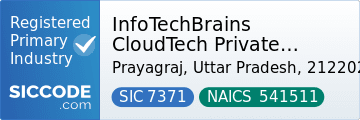Enterprise Resource Planning (ERP) systems have become indispensable tools for organizations seeking to streamline their operations and enhance productivity. These integrated software solutions facilitate the management of core business processes by consolidating data across various departments, including finance, human resources, supply chain, and customer relationship management. By providing a unified platform for data access and analysis, ERP systems empower decision-makers with real-time insights, enabling them to make informed choices that drive growth and efficiency.
The evolution of ERP systems has been marked by significant advancements in technology, leading to the development of cloud-based solutions that offer greater flexibility and scalability. As businesses increasingly embrace digital transformation, the demand for robust ERP systems continues to rise. Organizations of all sizes are recognizing the value of these systems in optimizing workflows, reducing operational costs, and improving overall performance.
In this context, ERPNext emerges as a compelling option for businesses looking to harness the power of ERP without the complexities often associated with traditional solutions.
Key Takeaways
- ERP systems are essential for integrating and managing core business processes
- ERPNext is an open-source ERP system designed for small and medium-sized businesses
- ERPNext offers features such as accounting, project management, and CRM
- ERPNext is more affordable than SAP, Oracle, Microsoft Dynamics, and NetSuite
- ERPNext provides a user-friendly interface and customizable user experience
Overview of ERPNext
ERPNext is an open-source ERP solution designed to cater to the diverse needs of small to medium-sized enterprises (SMEs). Launched in 2014, it has gained traction for its user-friendly interface and comprehensive feature set. Built on the Frappe framework, ERPNext offers a modular architecture that allows businesses to customize and extend its functionalities according to their specific requirements.
This flexibility makes it an attractive choice for organizations seeking a cost-effective yet powerful ERP solution. One of the standout features of ERPNext is its commitment to community-driven development. As an open-source platform, it benefits from contributions from a global community of developers and users who continuously enhance its capabilities.
This collaborative approach not only fosters innovation but also ensures that the software remains relevant in an ever-evolving business landscape. With a focus on usability and accessibility, ERPNext empowers organizations to take control of their operations while minimizing reliance on external vendors.
Features and functionalities of ERPNext
ERPNext boasts a rich array of features designed to address various business functions. Its core modules include accounting, inventory management, sales, purchasing, project management, and human resources. Each module is seamlessly integrated, allowing for real-time data sharing and collaboration across departments.
For instance, the accounting module automatically updates financial records based on sales transactions, ensuring that businesses maintain accurate financial statements without manual intervention. In addition to its core functionalities, ERPNext offers advanced features such as customer relationship management (CRM), manufacturing management, and e-commerce integration. The CRM module enables businesses to track leads, manage customer interactions, and analyze sales performance, fostering stronger relationships with clients.
Meanwhile, the manufacturing module supports production planning and scheduling, helping organizations optimize their supply chain processes. With its comprehensive suite of tools, ERPNext positions itself as a one-stop solution for businesses looking to enhance operational efficiency.
Comparison of ERPNext with SAP
When comparing ERPNext with SAP, one of the most established players in the ERP market, several key differences emerge. SAP is renowned for its extensive capabilities and scalability, making it suitable for large enterprises with complex needs. However, this complexity often comes at a high cost in terms of both implementation and maintenance.
In contrast, ERPNext is designed with SMEs in mind, offering a more straightforward implementation process and lower total cost of ownership. While SAP provides a wealth of features tailored for large organizations, ERPNext excels in its user-friendly interface and ease of customization. Businesses using ERPNext can quickly adapt the system to their unique workflows without extensive technical expertise.
This agility allows SMEs to respond swiftly to market changes and operational challenges, a crucial advantage in today’s fast-paced business environment. Ultimately, the choice between ERPNext and SAP will depend on an organization’s size, budget, and specific requirements.
Comparison of ERPNext with Oracle
Oracle is another heavyweight in the ERP landscape, known for its robust database solutions and enterprise-grade applications. When juxtaposed with ERPNext, Oracle’s offerings tend to be more complex and feature-rich, catering primarily to large corporations with intricate operational structures. While Oracle provides powerful analytics and reporting capabilities, it often requires significant investment in both time and resources for implementation.
On the other hand, ERPNext stands out for its accessibility and affordability. The open-source nature of ERPNext allows businesses to leverage its capabilities without incurring hefty licensing fees associated with Oracle products. Additionally, ERPNext’s modular design enables organizations to implement only the features they need at any given time, making it a more flexible option for growing businesses.
For companies seeking a balance between functionality and cost-effectiveness, ERPNext presents a compelling alternative to Oracle’s offerings.
Comparison of ERPNext with Microsoft Dynamics
Microsoft Dynamics is a well-known name in the ERP space, offering a suite of applications that cater to various business needs. While both Microsoft Dynamics and ERPNext provide comprehensive solutions for managing business processes, they differ significantly in terms of deployment options and pricing structures. Microsoft Dynamics offers both cloud-based and on-premises solutions but often comes with higher licensing costs that can be prohibitive for smaller organizations.
In contrast, ERPNext’s open-source model allows businesses to deploy the software on their own servers or opt for cloud hosting at a fraction of the cost associated with Microsoft Dynamics. Furthermore, ERPNext’s intuitive user interface simplifies navigation and reduces the learning curve for employees. This ease of use can lead to quicker adoption rates within organizations compared to Microsoft Dynamics, which may require more extensive training due to its complexity.
Comparison of ERPNext with NetSuite
NetSuite is a cloud-based ERP solution that has gained popularity among mid-sized businesses due to its comprehensive suite of features and scalability. However, when comparing NetSuite with ERPNext, several distinctions become apparent. NetSuite is known for its robust financial management capabilities and global compliance features; however, it often comes with a steep price tag that may not be feasible for all organizations.
ERPNext offers similar functionalities but at a significantly lower cost. Its open-source nature allows businesses to customize the software according to their specific needs without incurring additional expenses associated with proprietary software like NetSuite. Moreover, while NetSuite provides extensive support for multi-currency transactions and international operations, ERPNext also includes these features but remains more accessible for smaller businesses looking to expand globally without breaking the bank.
Cost comparison of ERPNext with other ERP systems
Cost is often a critical factor when selecting an ERP system. Traditional solutions like SAP or Oracle typically involve substantial upfront investments in licensing fees, hardware infrastructure, and ongoing maintenance costs. In contrast, ERPNext offers a more budget-friendly alternative with its open-source model.
Organizations can choose between self-hosting or utilizing cloud services at competitive rates, significantly reducing total ownership costs. Additionally, many proprietary systems impose annual maintenance fees that can escalate over time as businesses grow or require additional features. With ERPNext, users benefit from a transparent pricing structure that allows them to scale their usage without unexpected financial burdens.
This cost-effectiveness makes ERPNext particularly appealing for SMEs looking to implement an ERP solution without compromising on quality or functionality.
Implementation and customization comparison of ERPNext with other ERP systems
The implementation process can be a daunting task for any organization considering an ERP system. Traditional solutions like SAP or Oracle often require extensive planning and resources for successful deployment due to their complexity. In contrast, ERPNext is designed for rapid implementation with minimal disruption to existing operations.
Its user-friendly interface allows teams to get up and running quickly while providing ample documentation and community support. Customization is another area where ERPNext shines compared to other systems. While proprietary solutions may offer customization options, they often come with limitations or require additional costs for development work.
With ERPNext’s open-source framework, businesses have the freedom to tailor the software extensively according to their unique workflows without incurring hefty fees or relying on vendor support. This flexibility empowers organizations to adapt their systems as they evolve over time.
User interface and user experience comparison of ERPNext with other ERP systems
User experience plays a pivotal role in the successful adoption of any software solution. A well-designed user interface can significantly enhance productivity by reducing the time employees spend navigating complex systems. In this regard, ERPNext stands out with its clean and intuitive interface that prioritizes usability.
Users can easily access essential functions without feeling overwhelmed by unnecessary features or cluttered layouts. In contrast, many traditional ERP systems struggle with user experience due to their complexity and outdated interfaces. Employees may find themselves spending excessive time searching for information or completing tasks within convoluted menus.
This can lead to frustration and decreased productivity over time. By focusing on simplicity and ease of use, ERPNext ensures that employees can quickly adapt to the system and leverage its capabilities effectively.
Conclusion and recommendation
In conclusion, as organizations navigate the complexities of modern business operations, selecting the right ERP system becomes paramount for success. While established players like SAP, Oracle, Microsoft Dynamics, and NetSuite offer robust solutions tailored for larger enterprises, they often come with significant costs and complexities that may not align with the needs of small to medium-sized businesses. ERPNext emerges as a compelling alternative that combines affordability with powerful functionalities tailored for SMEs.
Its open-source nature allows for extensive customization without incurring prohibitive costs associated with proprietary systems. Furthermore, its user-friendly interface facilitates quick adoption among employees while ensuring seamless integration across various business functions. For organizations seeking an effective yet budget-friendly ERP solution that can grow alongside their business needs, we recommend considering ERPNext as a viable option.
By leveraging its capabilities, businesses can enhance operational efficiency, improve decision-making processes, and ultimately drive sustainable growth in today’s competitive landscape.
FAQs
What is ERPNext?
ERPNext is an open-source, web-based enterprise resource planning (ERP) software that helps businesses manage their processes across functions such as accounting, sales, purchasing, and inventory management.
How does ERPNext compare to other ERP systems?
ERPNext stands out from other ERP systems due to its open-source nature, user-friendly interface, and comprehensive feature set. It also offers a lower total cost of ownership compared to many proprietary ERP systems.
What are some key features of ERPNext?
ERPNext offers features such as accounting, CRM, project management, HR management, manufacturing, and inventory management. It also provides customizable dashboards, role-based permissions, and integration with third-party applications.
How does ERPNext compare in terms of cost?
ERPNext is known for its cost-effectiveness, as it is an open-source software with no licensing fees. This makes it a more affordable option compared to many proprietary ERP systems.
What are the deployment options for ERPNext?
ERPNext can be deployed on-premises or in the cloud, providing flexibility for businesses with different IT infrastructure preferences.
How does ERPNext compare in terms of user interface and ease of use?
ERPNext is known for its intuitive and user-friendly interface, making it easier for employees to adapt to and use the system compared to some other ERP systems that may have more complex interfaces.
What support and community resources are available for ERPNext?
ERPNext has a strong community of users and developers who contribute to its ongoing development and provide support through forums, documentation, and community events. Additionally, professional support and consulting services are available for businesses that require additional assistance.











